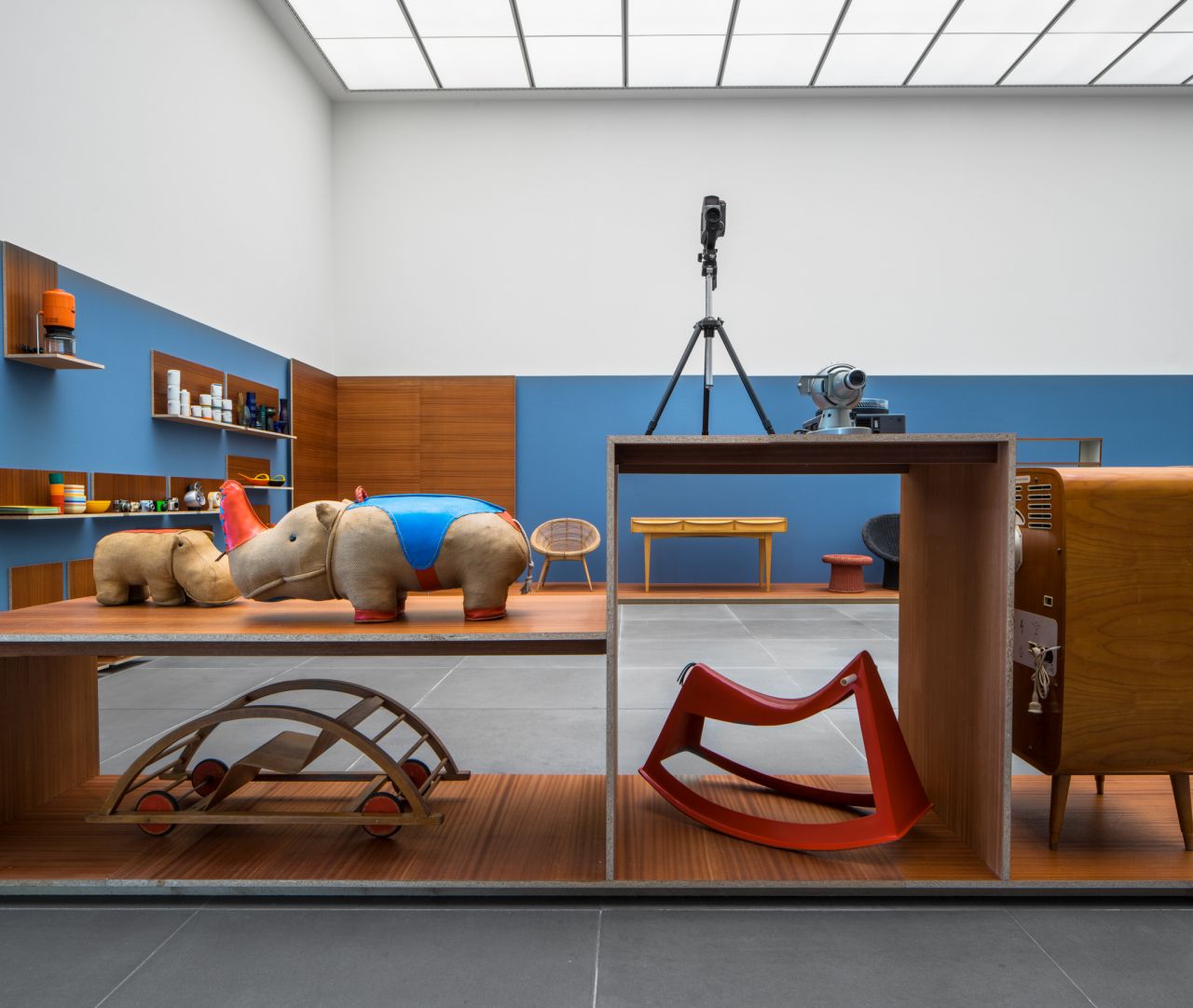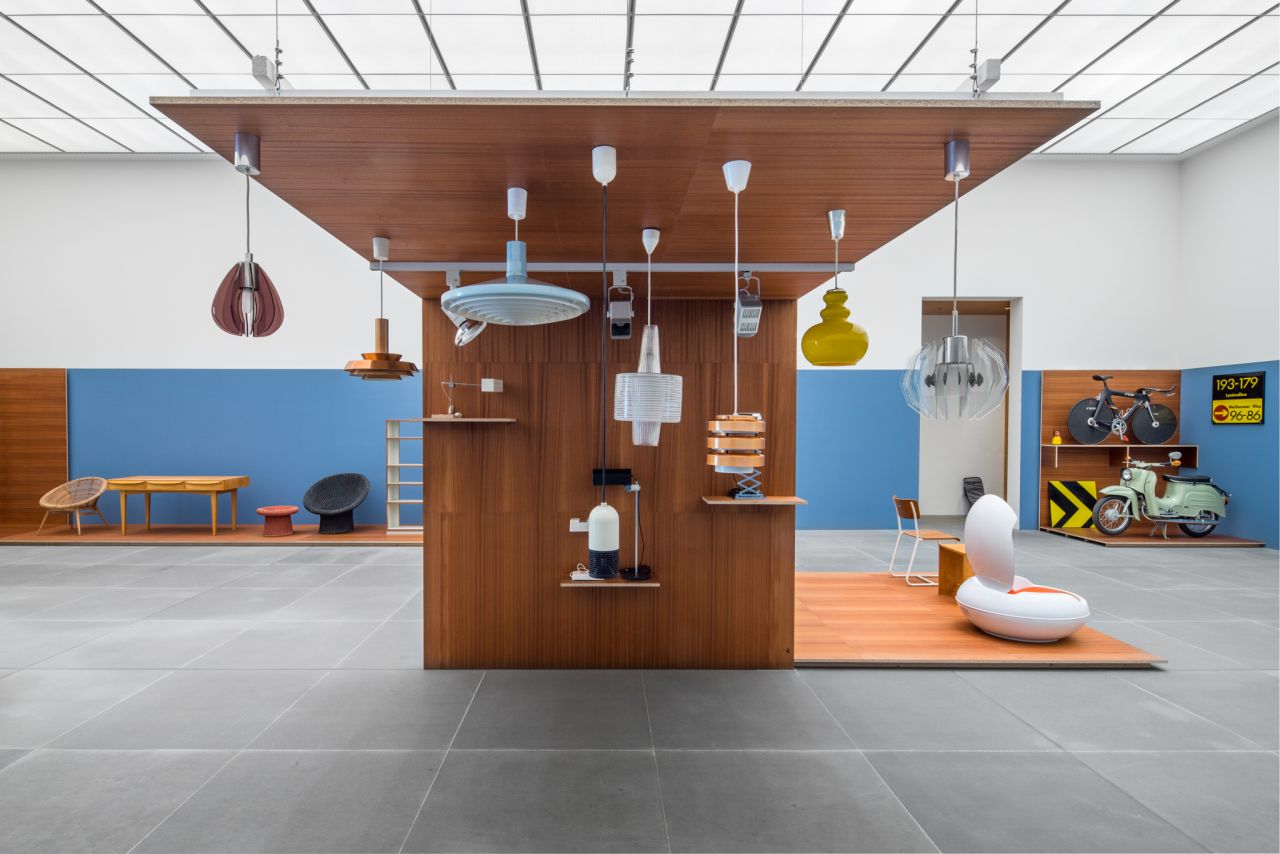East and West: DDR / BRD
About the Exhibition
Between 1949 and 1990 Germany was divided as a result of the Cold War. The Berlin Wall erected in 1961 was a political symbol of that fact. During this period, the consequences of World War II and of the conflicting political and economic systems in place in the two German states were also reflected in their respective approaches to product design.
The room DDR/BRD is devoted to a series of different juxtapositions of everyday objects from then East Germany / DDR (GDR) and West Germany / BRD (FRG).
Technical appliances and furniture, glass and china, luminaires and toys offer us numerous different insights into these parallel worlds. So what we find is not only an array of solutions designed in a comparable fashion and phenomena common to both societies but also an idea of the different approaches taken by the two nations.
Looking back at the era, it is clear how objects have left their mark on entire generations of society – there is the characteristic East German design and that typical of West Germany, each conditioned by the different ways of life. Whereas in the West products were distinguished by the diversity of their materials, something typical of the East was its focus on the chemicals industry and consequently on plastic as a material.
That said, in both East and West Germany the ideal of a matter of-fact minimalist formal approach prevailed owing to the two countries’ shared history (which included, for example, the design principles propagated by “Deutscher Werkbund”) and thus objects in both countries were not so dissimilar in aesthetic terms.
The HfG Ulm, Berlin’s Weissensee College of Art and Burg Giebichenstein in Halle all had a considerable influence on industrial design, most of which took its cue from Functionalism. Both the German Design Council in West Germany and East Germany’s Amt für Industrielle Formgestaltung (Industrial Design Authority) were, as their country’s official representatives, at pains to present to the outside world a modern image of their approach to product design.
Something doubtless less well-known is the fact that some designs in the West, such as the “Senftenberger Ei”, were actually manufactured in the East. Indeed, the two countries were economically linked. As a result, companies such as Quelle and Neckermann had vacuum cleaners, kitchen appliances, radios and cameras manufactured in the East in exchange for hard currency and sold them on the Western market without customers noticing anything. Despite restrictive conditions such as a lack of raw materials and the prevailing political circumstances, with hindsight the achievements of industrial designers in the GDR can be described as innovative, inventive and sustainable.
The display for the presentation DDR/BRD was designed by the artist Tilo Schulz (born in Leipzig in 1972).
Plan your visit at Neues Museum Nürnberg
Where?
-
Klarissenplatz, 90402 Nuremberg
Open:
-
Daily 10 a.m. – 06 p.m.
-
On Mondays closed
-
On Thursdays 10 a.m. – 08 p.m.


-
Curated by:
Angelika Nollert, Xenia Riemann, Josef Straßer
-
Cooperation of:
Die Neue Sammlung – The Design Museum and
Neues Museum – Staatliches Museum für Kunst und Design Nürnberg